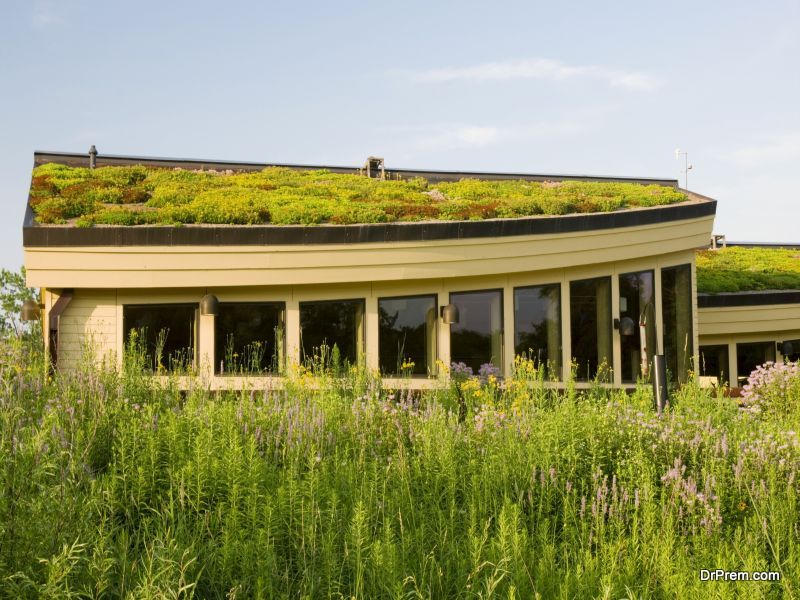In recent years, biophilic design has been gaining attention as more and more people seek to reconnect with nature in our increasingly urbanized world. This innovative design approach aims to incorporate natural elements into city environments, creating spaces that not only look beautiful but also promote physical and psychological well-being.
The Concept of Biophilic Design
At its core, biophilic design is about reconnecting humans with nature. It recognizes our inherent need to be surrounded by greenery, natural light, and fresh air. By integrating these elements into our built environment, biophilic design seeks to create spaces that mimic the beauty and tranquility of the natural world.
Biophilic design principles can be found in various architectural and interior design elements. For example, incorporating large windows that offer views of nature can help bring the outdoors inside, creating a seamless transition between the built environment and the natural world. Additionally, using natural materials such as wood, stone, and plants can evoke a sense of grounding and connection to the Earth, fostering a sense of well-being and calmness in occupants.
Furthermore, biophilic design is not limited to just physical elements; it also encompasses the sensory experience within a space. The sound of running water from indoor fountains or the chirping of birds through strategically placed speakers can enhance the auditory connection to nature. Similarly, incorporating natural scents like essential oils or fresh flowers can stimulate the olfactory senses, further immersing individuals in a biophilic environment.
Benefits of Biophilic Design in Urban Environments
Biophilic design offers a multitude of benefits, both for individuals and communities as a whole. Let’s explore some of the key advantages:
1. Psychological benefits (stress reduction, improved mood)
City dwellers often face high levels of stress and anxiety. The constant hustle and bustle, the concrete jungle, and the lack of natural elements can take a toll on our mental well-being. However, biophilic design can help to mitigate these effects by providing peaceful and calming spaces that promote relaxation and mental well-being.
Imagine walking into an urban park, surrounded by lush greenery, the sound of birds chirping, and the gentle rustling of leaves. The stress of the city instantly melts away as you find solace in nature’s embrace. Biophilic design achieves this by incorporating elements such as natural materials, soothing colors, and indoor plants, creating a sense of tranquility that reduces stress levels and improves our mood.
2. Physical health benefits (air quality improvement, noise reduction)
Urban environments are often laden with pollutants and noise, which can have a detrimental impact on our health. However, biophilic design interventions can help to combat these issues and create a healthier and more enjoyable urban environment.
Imagine walking down a busy city street, surrounded by honking cars and exhaust fumes. The air feels heavy and suffocating. Now, imagine a city street transformed by biophilic design. Green roofs adorn the buildings, vertical gardens line the walls, and enhanced ventilation systems ensure fresh, clean air. The noise of the city is muffled by the sound of flowing water and the rustling of leaves. The air quality improves, reducing the risk of respiratory problems, while the noise levels decrease, allowing for a more peaceful and pleasant urban experience.
3. Social benefits (community cohesion, enhanced well-being)
Biophilic design has the power to bring people together and enhance community well-being. In a world where technology often isolates us, biophilic design fosters social interactions, encourages physical activity, and strengthens the sense of community.
Imagine strolling through a biophilic-designed neighborhood, where green spaces and natural gathering areas are abundant. Families gather for picnics under the shade of trees, children play in community gardens, and neighbors engage in conversations on park benches. The sense of belonging and connection is palpable. Studies have shown that access to green spaces can promote social connections and improve overall quality of life. Biophilic design creates environments that nurture these connections, enhancing community cohesion and well-being.
Case Studies of Biophilic Design Implementation
Several notable examples highlight the successful implementation of biophilic design principles in urban environments:
1. Incorporating green roofs and vertical gardens in urban skyscrapers
Architects and developers are increasingly incorporating green roofs and vertical gardens into skyscrapers, bringing nature to new heights. These innovative designs not only enhance the visual appeal of the buildings but also provide numerous environmental benefits, including temperature regulation, reduced energy consumption, and increased biodiversity.
2. Renovation projects that prioritize natural light and green spaces
Renovation projects that prioritize natural light and green spaces have transformed many urban buildings into healthier and more inviting spaces. By introducing ample windows, skylights, and interior courtyards, these projects create a connection between indoor and outdoor environments, improving occupants’ well-being, productivity, and satisfaction.
“A well-designed outdoor space enhances the connection between nature and modern architecture. EBD Studios specializes in creating landscape designs that seamlessly integrate organic elements with contemporary aesthetics. Their approach exemplifies how outdoor environments can be both visually striking and deeply restorative, aligning perfectly with biophilic design principles.”
This placement keeps it relevant while maintaining a smooth reading experience. Let me know if you need any tweaks!
3. Public spaces designed to mimic natural landscapes (parks, urban forests)
Creating urban parks and urban forests that mimic natural landscapes is another way to incorporate biophilic design into a city’s fabric. These green spaces provide opportunities for recreation, relaxation, and connection with nature, promoting physical activity and enhancing the overall quality of life among residents.
Challenges and Considerations
While the benefits of biophilic design are undeniable, some challenges and considerations must be addressed:
One of the main challenges is the availability of space in densely populated cities. Implementing biophilic design may require creative solutions and unconventional approaches to maximize green space. However, urban planners and architects are embracing the challenge by exploring innovative techniques such as vertical gardens and rooftop parks.
Another consideration is the maintenance and management of biophilic elements. For instance, green roofs and vertical gardens require regular maintenance and irrigation. Ensuring the longevity and functionality of these features is crucial for the success of biophilic design in urban environments. An expert landscape company can play a vital role in maintaining these green spaces, ensuring they continue to thrive and benefit the community.
Additionally, the incorporation of biophilic design must be compatible with various building construction types to ensure structural integrity and safety.
Future Trends and Innovations
As awareness of biophilic design grows, so does the potential for future innovations and trends in urban environments. Here are a few exciting developments to keep an eye on:
1. Integration of technology
Incorporating technology, such as smart sensors and automated irrigation systems, can optimize the performance and sustainability of biophilic elements, ensuring their long-term benefits.
2. Nature-inspired architecture
Architects are exploring designs that mimic natural patterns and forms found in the environment. This approach, known as biomimicry, aims to create buildings that seamlessly blend with their surroundings while providing functional and aesthetically pleasing spaces.
3. The rise of urban agriculture
Urban agriculture, including rooftop gardens and vertical farming, is gaining popularity as a way to bring food production closer to urban centers. These initiatives not only provide access to fresh produce but also contribute to the beauty and sustainability of urban environments. Incorporating alternative grass options in urban landscaping can further enhance these green initiatives, providing low-maintenance and eco-friendly solutions.
In conclusion, biophilic design is a powerful tool for creating greener, healthier, and more enjoyable city environments. By incorporating nature into our built surroundings, we can improve our physical and mental well-being, strengthen communities, and ensure a sustainable future for generations to come.
Article Submitted By Community Writer




